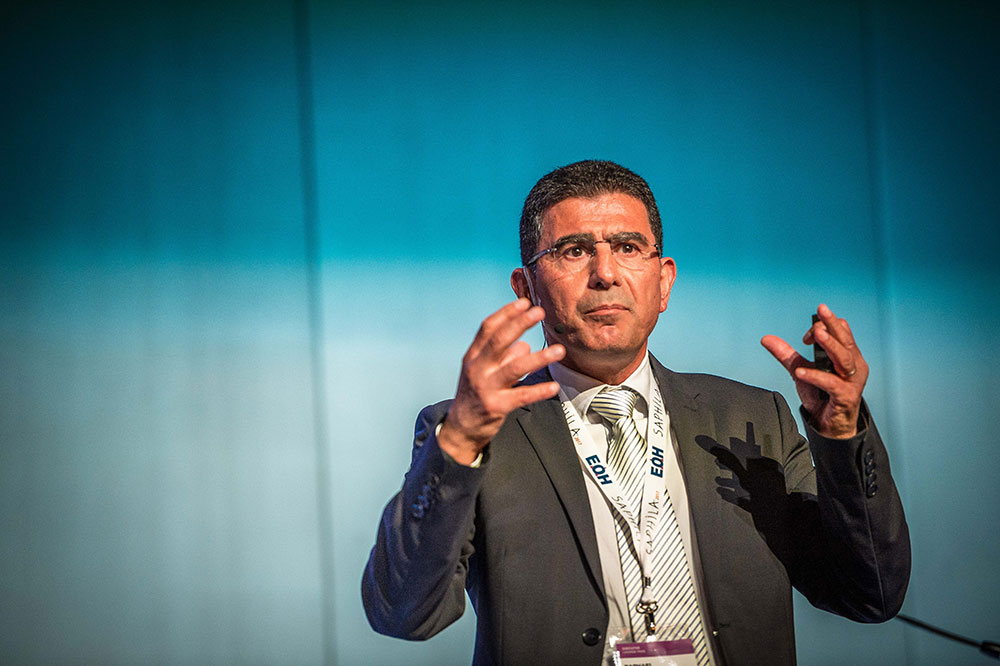Not too far in the future, by 2025, people, objects and businesses will be living and operating in a highly networked and smart world. A world where intelligent objects; independent production and logistics; collaboration robots; the ‘facebook’ of machines; digital assistants; business networks; security, integrity and trust; and new self-learning processes will come to the fore and be commonplace.
This was the scene set by Raphael Perez, Vice President, SAP Leonardo EMEA, as he kicked off its second day of Saphila 2017 – the African SAP User Group’s (AFSUG) biennial conference for SAP users, taking place on 5 and 6 June 2017 at Sun City.
He highlighted that 72% of global CEOs believe that the next three years will be more critical for their industry than the last 50 years, and that companies with 50% or more of their revenue from digital ecosystems achieve 32% higher revenue growth and 27% higher profit margins. However, as Perez pointed out, only 5% of organisations feel that they have mastered digital to a point of differentiation from their competitors.
“Tomorrow’s digital value chain is an automated and accelerated process flow, with shorter delivery time from order processing to delivery,” he continued.
Looking at emerging systems in the next two years, Perez noted the following trends:
• Artificial Intelligence (AI) and machine learning, the Internet of things (IoT) and insights;
• Embedded machine learning, analytics providing built-in guidance; and
• Conversational applications: the new user experience.
According to the IDC, by 2018, 75% of enterprise and ISV development will include AI or machine learning and by 2019, APIs will be the primary mechanism to connect data, algorithms and decision services. Furthermore, Gartner says that by 2019 natural language generation will be a standard feature of 99% of modern business intelligence platforms.
“Data is the fuel of the 21st century,” says Perez. “And SAP is intelligently connecting people, things and business, focusing on digital innovation at scale to confidently transform your organisation. SAP is, however, not only targeting the customer on the economic level but is also adding a layer of intelligence.”
He highlights SAP Leonardo, SAP’s recently launched digital innovation system, which integrates breakthrough technologies and runs them seamlessly in the cloud. “It offers design thinking methodology and SAP expertise to help you rapidly adopt new capabilities and business models and accelerate your digital transformation. Plus, you’ll remain on the cutting edge as we add new technologies to the portfolio,” he says.
Perez adds that organisations across industries have benefited from SAP Leonardo already and have seen outcomes such as improved employee productivity with procurement through the development of a front-end chatbot for procurement application, to reduced labour costs and the ability to compete for talent by means of an aggregated and anonymised workforce data used to benchmark labour rates by location.
“SAP Leonardo allows organisations to quickly move from the brainstorming phase to the technology blueprint. Our global Leonardo centres enable design thinking and innovation and the solution brings these innovative ideas to life through rapid prototyping. SAP Leonardo also rapidly creates, tests and refines the business case for ROI and strategic values, as well as creates a technology roadmap, identifies dependencies and remediates risks,” says Perez. “And SAP Leonardo fully integrates with SAP applications.”
With new capabilities such as machine learning, big data, analytics and IoT on a SAP Cloud Platform and modular capabilities that are easy to buy, deploy and consume, SAP Leonardo is open and extensible with rich APIs. “The digital innovation system also easily connects innovation with existing and future SAP third-party technologies, data, and systems across core and digital business,” says Perez.
“It offers organisations an accelerator into the digital era and a virtuous cycle of innovation. SAP Leonardo is a system of intelligence, offering the IoT, machine learning, analytics, big data, blockchain, data intelligence and design thinking elements for your businesses processes, making SAP applications more intelligent and capable and delivering capabilities to create and scale new intelligent applications,” concludes Perez.
It has become very clear during the Saphila 2017 conference, running over two days, that there is a tidal wave of rapid digital innovation coming towards us and it is more critical than ever to reimagine and reinvent.
More information about the Saphila exhibition and conference is available here.
Click below to share this article

